I’m lucky to reside in an area that still has retained some aspects of its rural past amid its current suburb-ity. A walk through the neighborhoods of the northern part of Queens…College Point, Whitestone, even Bayside…will reward the urban enthusiast with glimpses of the small Long Island North Shore towns they used to be, as there are town centers at 14th Avenue and 150th Street in Whitestone, along College Point Boulevard between 14th and 18th Avenue, and Bell Boulevard between Northern Boulevard and 35th Avenue. The spaces between these town centers, once meadows or farmland, have been filled with block after block of one and two-family homes and seem to have been thoroughly “folded” into a bland Queens fabric: definitely not the dense, urban feel of a Soho or a Park Slope, but not the thoroughly suburban atmosphere of a Levittown or Hicksville.
The two “northeasternmost” of Queens’ neighborhoods, Douglaston and Little Neck, however, have a different tone: they somehow seem carved out of the rather exclusive, definitely monied precincts of the Nassau County towns immediately to the east, Great Neck and Manhasset. Part of it is their compactness: both neighborhoods are served by a short shopping strip along Northern Boulevard, and the area’s hilly topography doesn’t lend itself to block upon block of similar-looking ranch houses.
Scotsman George Douglas purchased the peninsula from Wyant Van Zandt in 1835. The region was later developed as a suburban resort and exclusive enclave, and enjoys pleasant views of Little Neck Bay and Long Island Sound. Streets were laid out in 1906 by the Rickert-Finlay realty company, who had purchased the property from William Douglas, George’s son, and eclectic, individualistic homes were built in the area, which has always been among Queens’ most affluent.
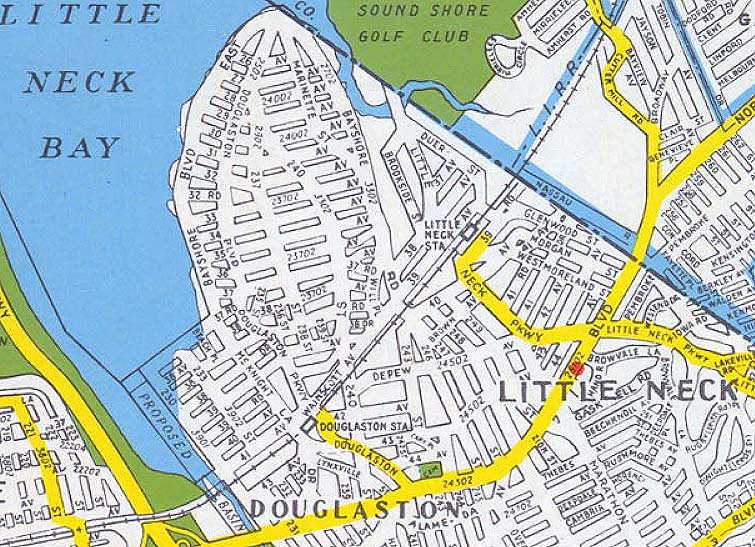
The streets have retained their original names and have ignored the Queens mania for giving every street a number; however, Hagstrom numbered Douglaston streets in maps made from the 1940s (above map 1949) into the 1970s. Can area residents confirm for me whether the numbered avenues were there during that time?
The Douglaston name was appended to the area in 1876, after William Douglas had donated a Long Island Rail Road stop. Today, mansions in Douglas Manor can sell for $4 million or more.
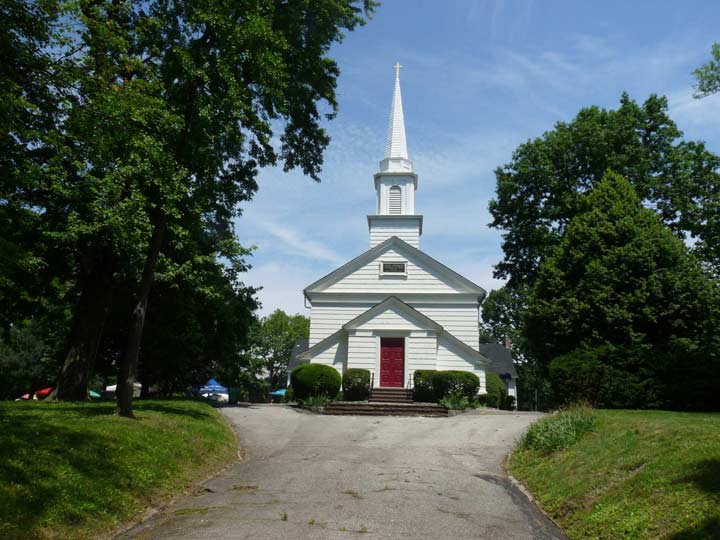
For me, Douglaston begins at Zion Church and its graveyard, on Northern Boulevard just east of Douglaston Parkway. Zion Church was completed in 1830 on plans from Trinity Church architect Richard Upjohn. The original church burned down in the 1920s, but was reconstructed as a faithful copy of the original. Colonial-era Douglaston landowner Wynant Van Zandt is interred in the family vault beneath the cemetery; Van Zandt had held local services in his home before the church was built. Bloodgood Cutter, who once owned large areas of property in Douglaston and Little Neck and fancied himself a poet of note (though he was actually a master of doggerel, parodied in Mark Twain’s Innocents Abroad as a’Poet Lariat”) is interred here.
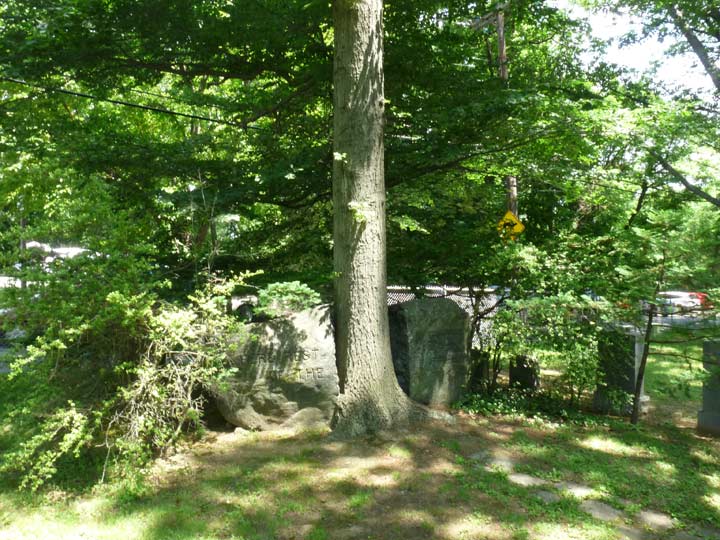
The Matinecock Indians, a branch of the Algonquin group, had occupied the lands of eastern Queens for centuries before Europeans arrived. While the Matinecock tribes gradually sold off their holdings to the Dutch and British in other parts of Long Island, giving the lands a peaceful transfer, Thomas Hicks (of the Hicks family that settled Hicksville) forcibly evicted many remaining Matinecocks from Little Neck.
Much later, when the Flushing and Hempstead Turnpike, also known as Broadway and presently, Northern Boulevard was being graded and widened, the graves of the Matinecocks were located in a roadside cemetery. They were reinterred in the Zion Episcopal Church cemetery in 1931. A stone marker, designed in two pieces on either side of a tree, is marked “Here Rest the Last of the Matinecoc.”
Descendants of the Matinecocks, notably the Waters family, still reside in Little Neck, and the intersection of Northern Boulevard and Marathon Parkway was recently sub-named “Matinecock Way.”
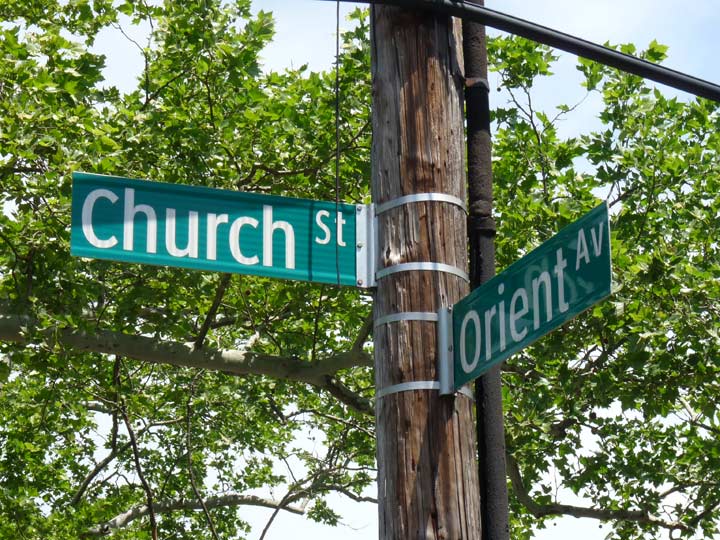
The area south of the Long Island Rail Road, east of Douglaston Parkway, and north of Northern Boulevard was developed as Douglaston Hill beginning in the mid-1850s on the former Jeremiah Lambertson farm. While not as exclusive as Douglas Manor to the north, it features dozens of architectural styles from the Victorian up to the modern eras. Some streets feature unusual brick gutters.
I can verify that the streets in Douglaston Hill were numbered until a decade ago, when they resumed their original names by local ordinance. Most of the house numbers are “regular” and don’t conform to Queens’ hyphenated house numbering scheme.
On Cherry Street we have what I believe are an original hitching post and curb stepping stone. The post’s manufacturer name is indistinct, but the town, Chelmsford, MA, is plainly visible. These artifacts date back to the days of horse-drawn wagons. Curb stepping stones date back to when streets were not regularly paved. On rainy or muddy days, wagons would pull up to the block and people could step out onto it without getting shoes muddy.
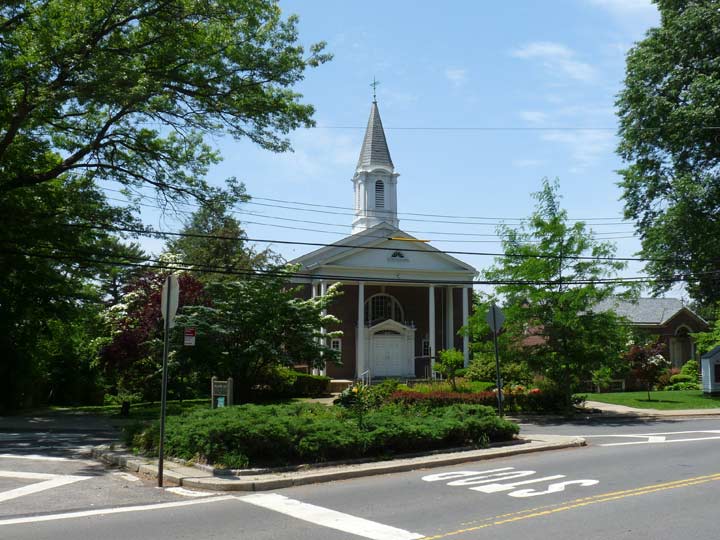
The Community Church of Douglaston (associated with the Reformed Church) was organized in 1919 and services were first held at the Douglaston Club. The current church building at Douglaston Parkway and 40th Avenue was dedicated in 1925.
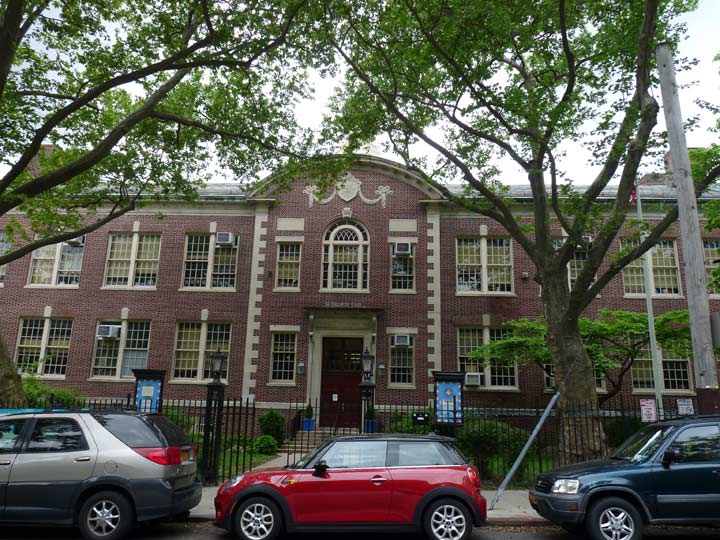
Just south of the church is PS 98 (the Douglaston School) a handsome early 20th Century building. It’s hard to find architectural details on NYC public schools, so any would be appreciated.
It used to be simple for school buses to approach the school when Douglaston Parkway crossed the Long Island Rail Road tracks via a simple grade controlled by crossing gates, but the parkway was elevated and bridged over the RR in the 1930s. The stub ends were renamed 235th Street; buses now have to U-turn at 40th Avenue.
The Douglaston LIRR station was established as early as the 1870s but the station house itself is relatively new (1962). As stated, traffic used to cross the tracks on a gate crossing that was eliminated several decades ago when the parkway was placed on a bridge and high-level platforms were installed at the station.
The station is also the site of a cutting of Flushing’s famed Weeping Beech Tree and Douglaston’s World War I memorial. The bronze plaque on the memorial lists the names of 60 men who died in the so-called Great War.

South of the railroad on 235th Street, a volunteer firehouse, still with its original bell used to call neighborhood firefighters, has become American Legion Post 103. The building was in use by the Douglaston Hose Company between 1906 and 1929, when the current FDNY firehouse was constructed on 244th Street.
235th Street and Douglaston Parkway features some of Douglaston’s last tracts of natural forest. In 2012 the Parks Department built a couple of trails through the tract, west of Douglaston Parkway between the railroad and Northern Boulevard, and cleared out the overlook which sits atop a rather steep hill for these parts and added new benches. It was named for the late Joseph Hellmann (1940-2010) an area writer and preservation activist, who successfully fought against a high rise building that would have been plunked into the tract.
Deep into the woods here is a natural kettle pond, Old Oak Pond, chronicled here by FNY correspondent Sergey Kadinsky.

Douglaston streets can be hard to figure out. I’ve seen this loop countless times from the railroad, as Cherry Street does a U turn to become Little Neck Road (called 38th Drive by Google, which hasn’t caught up). But the end of the loop is actually a small piece of Douglas Road, which begins its northern stretch for good at Hillside Avenue (38th Road). This small bit of Douglas Road has just one house on it.
A little further south, there’s a similar situation. if you follow 40th Avenue east from Douglaston Parkway it narrows considerably and loses its sidewalks. Finally it turns north and becomes 240th Street before it can end at the LIRR open cut.
However, the bend in the road…and only the bend in the road… is called Willow Street. There must be only one or two homes with a Willow Street address.
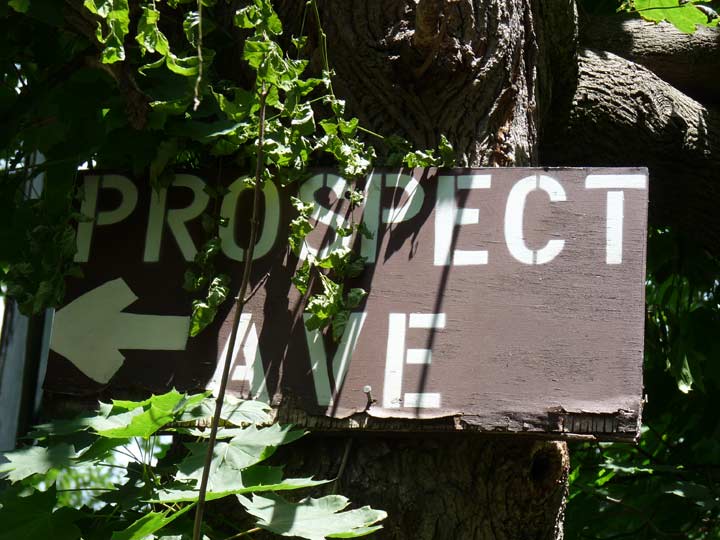
Even nuttier, a handmade sign indicates that Prospect Avenue can be found around the bend. But it can’t. The street it becomes is actually 240th Street.

The error is promulgated once again at the corner of 240th and Hillside. Another hand-stenciled sign says this is Prospect Avenue. However, the actual Prospect Avenue is a block west, and runs for one block between Hillside Avenue and Cherry Street.
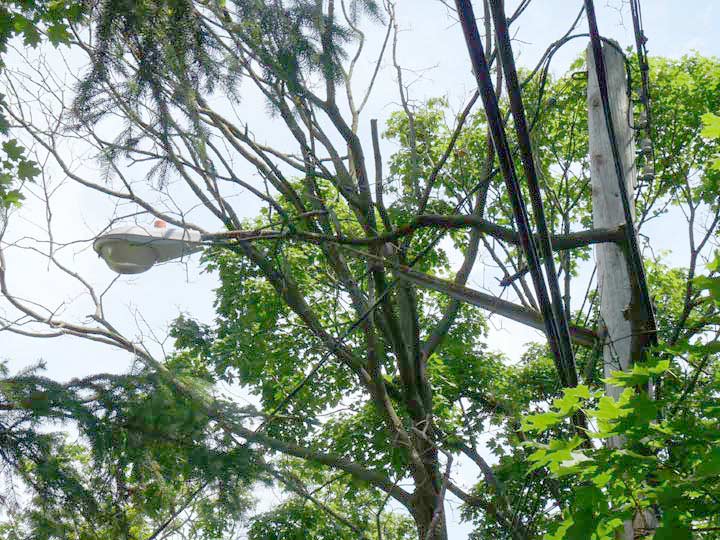
The Department of Transportation has overlooked this 1970s-era GE lamp on 40th Avenue, likely because it’s thickly wooded. Most other posts in Douglaston have now been changed out for bright white LED lamps; this sodium vapor lamp burns yellow. It missed the purge in 2009 that saw Crouse Hinds lamps installed on nearly every NYC lamppost except the historic models that use Bell fixtures.
At the north end of the Douglaston peninsula, Shore Road, Douglas Road, and West Drive all come together. While bicycling I noticed an anomaly in the street configuration at West Drive and Bayview Avenue. On each side the sidewalks and tree line form a semicircle and even the homes are constructed on an angle, conforming to the semicircles. However West Drive continues along with no traffic circle in evidence.
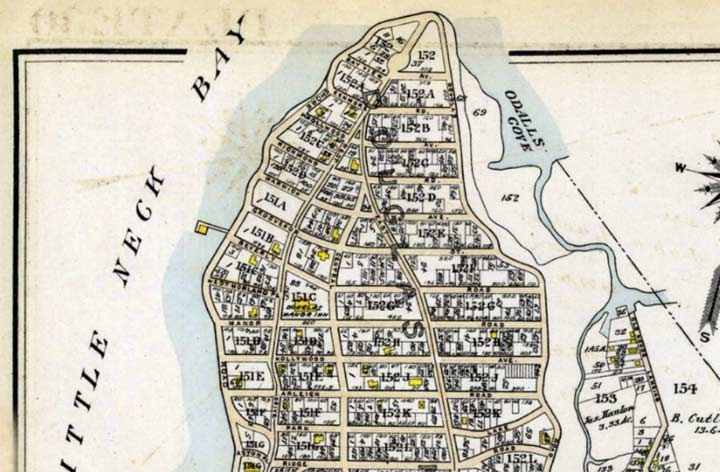
The 1909 map answers the question. Note the circle at the very top of the map, where West Drive meets Bayview Avenue. There had indeed been a circle here and it was there even as homes were constructed on lots surrounding it. In subsequent years, the circle was eliminated and West Drive was straightened. However, the sidewalks accompanying the old circle have remained.
Ridge Road, one of many of Douglaston’s east-west routes, has kept its brick gutters. It more resembles locales in Westchester County with its suburban architecture. Douglaston architecture is protected by the Landmarks Preservation Commission, and the eclectic styles here range from old-fashioned Tudor to streamlined, Wright-esque buildings that nonetheless fit right in.
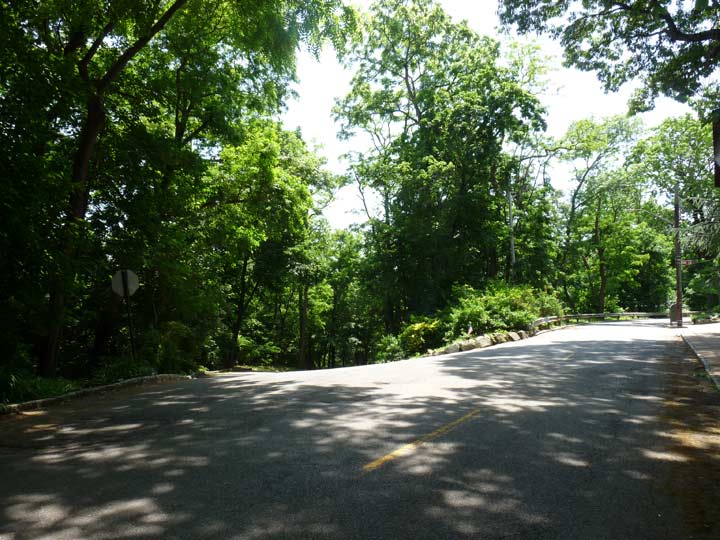
A road branches off on the left at Douglas Road between Oak Lane and ridge Road. As it turns out this is the only road north of Northern Boulevard that connects the communities of Douglaston and Little Neck.
The road snakes southeast through Udalls Cove Park and it actually carries three names, four if you call it “the back road” as locals do. The city has a street sign on Douglas Road calling the western section Bayshore Boulevard but apparently no one uses the name. There is only one address on the western section of the road which is called Sandhill Road west of Aurora Pond.
Aurora Pond is a small kettle pond in Udalls Cove Park.
Udalls Cove, accessible from the northern end of Little Neck Parkway at 255th Street north of the Long Island rail Road, is a 30-acre park dedicated solely to wildlife and nature preservation. Udalls contains salt marshes, a forest, meadow and a freshwater pond. The remains of Little Neck’s clamming past can be evidenced by the wood pilings at Virginia Point, the end of the parkway formerly known as Old House Landing Road. The cove is named for 19th Century settler Richard Udall, who owned a mill in the region; his family owned the property until 1950 when the Nassau County portion of the property was sold to the Nassau County Historical Society. The Udall’s Cove Preservation Committee, which takes charge of the park’s upkeep, was formed in 1969 and the cove was opened to the public in 1972.
The pond, meanwhile, was named for the co-founder of New York State Northeast Queens Nature and Historic Preserve Commission, Aurora Gareiss. A waterfront area at the north end of Little Neck Parkway is named Virginia Point for the other co-founder, Virginia Dent.
After passing Aurora Pond, Sandhill Road straightens out, narrows and runs along the Long Island Rail Road. It passes a few homes. This section of the “back road” is named 39th Avenue and the homes have hyphenated Queens addresses on that avenue. However the department of Transportation has not officially mapped it and does not provide a street sign, and the potholed road has not been repaved for some time. There are 2 or 3 lamps mounted on telephone poles.
The road ends at Little Neck Parkway, which runs across the tracks on one of NYC’s handful of grade crossings.
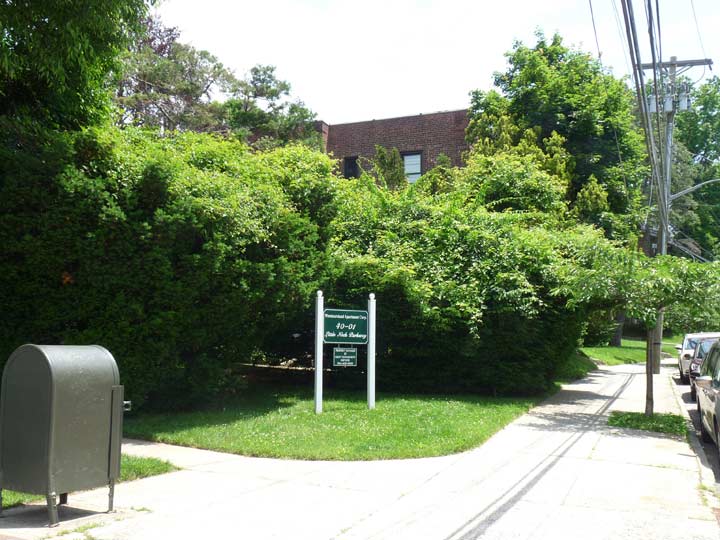
After a pleasant day in Douglaston it was home again to FNY headquarters at Westmoreland Gardens.
Please help contribute to a new Forgotten NY website.
Check out the ForgottenBook, take a look at the gift shop, and as always, “comment…as you see fit.”
7/29/18

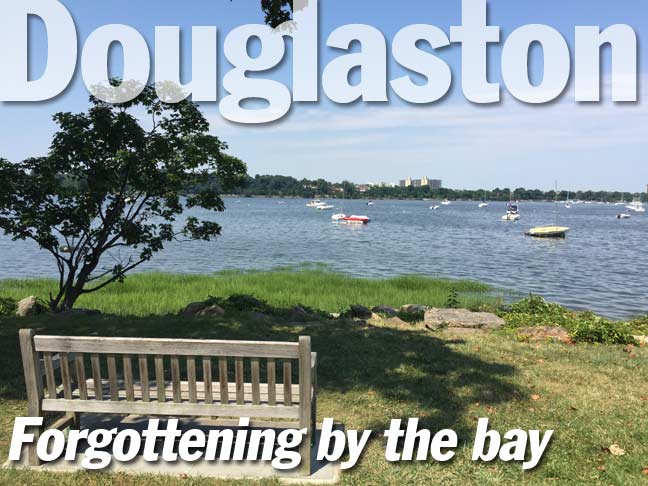
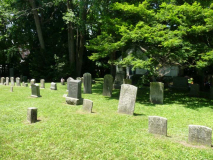
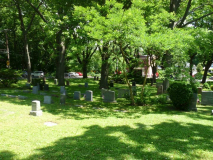
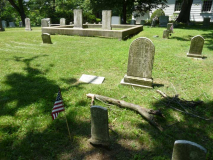
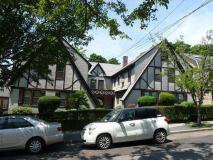
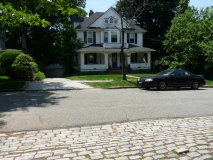
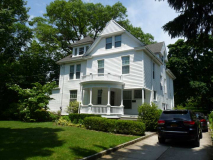
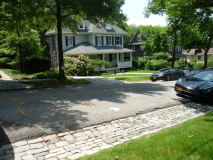
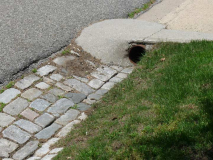
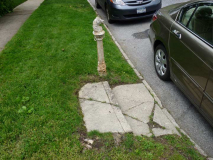
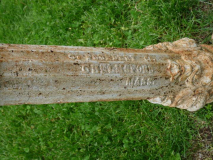

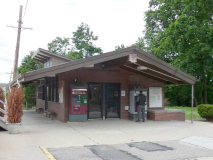
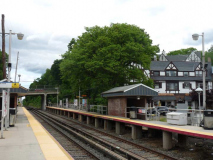
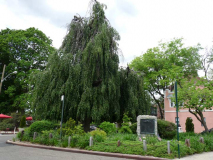
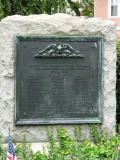
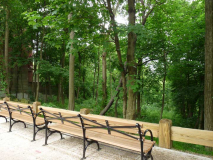

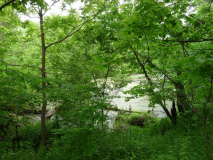
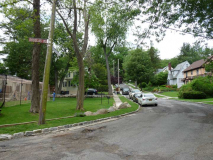
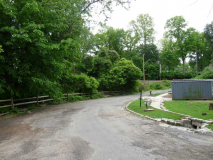
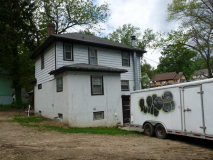

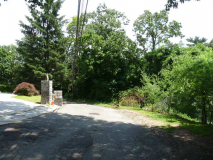
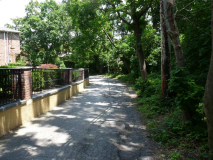
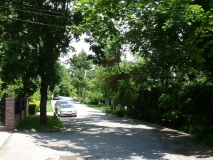
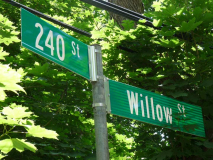
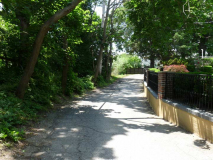
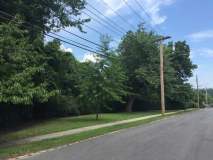
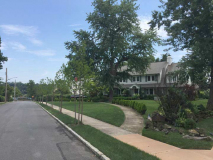
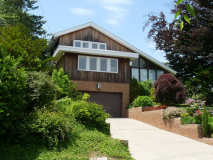
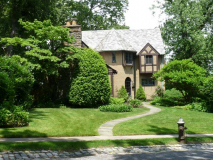
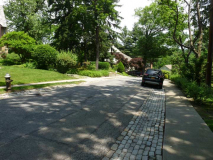
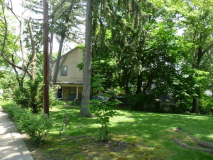
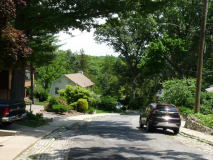
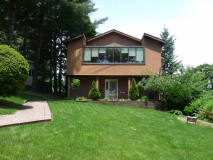
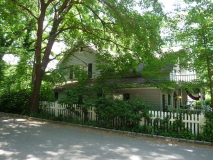
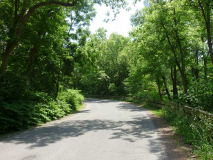
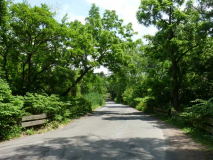
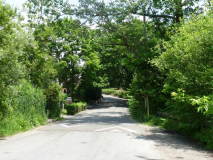
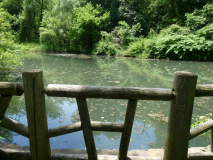
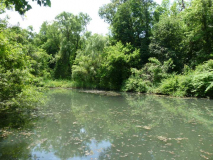
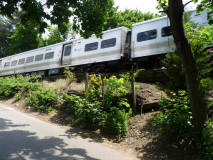
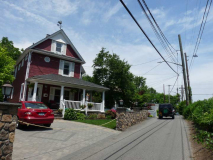
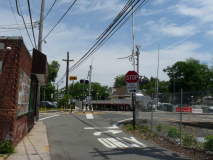
21 comments
Douglaston reminds me somewhat of Whitestone in the ’50s. We had Whitestone “Village” and the area between 3rd. Ave. and the river was very sparsely populated (nothing like it is now). My Mom always wanted to move to Douglaston (to her it was like Beverly Hills).
Beautiful. I pass by on the LIRR regularly to Great Neck and always loved the country like roads.
That traffic circle on West Drive is an oddity. Checked the NYC.gov aerial map from 1924, and the street is already straightened out by then. Wonder if it was a case of a traffic circle being mapped but never built. Space seems kind of tight for a turnaround, and the location of the circle is odd to say the least, considering it’s just a few yards north of an intersection.
One of those NYC curiousities that we love!
No mention of “Kiddie City”? I used to ride my bike from Whitestone past Fort Totten and along the Parkway for a day of inexpensive fun. Do that today, and you would be arrested for child endangerment.
Just to provide some clarification on the street naming conventions for Prospect Ave. Having lived on Cherry St in the 1980’s and 1990’s I want to say around 1988/89 the city began to change the named streets to the conventional numbered streets. Prospect Ave, although continued one block west technically, did continue as what is now called 240 st to that narrow turn you reference. At that narrow turn it turned in to Willow St. which terminated at the bottom of the hill at Douglaston Pkwy. The curved part of 240 st was called Circle Ave. I have some old maps that I can provide for your reference.
Great read!!
I love riding my bicycle through this part of Queens. I am thankful that DOT has repaved the main streets. I love the tranquil setting at shops by the LIRR station. I could sit at the plaza and have a slice of Pizza or drink an Espresso and just watch the morning or afternoon trains pass.
Interesting journey. Can anyone do some research into the AME church that was located in what is now Udall’s Cove Park? I can remember finding the ruins of the building in those woods as achild in the 1960s, between 247th ST & 243rd ST, south of the LIRR tracks.
I lived on 243rd St starting in 1967 and my father is still there. That AME church was turned into a house by a Douglas Manor resident and remains a house today. I remember folks walking down the hill to the church every Sunday, dressed in their Sunday finest. I would say it stopped being a church sometime in the late 70’s.I too, used those woods as hunting grounds (playing!) in my youth. It was magical.
I grew up on Ridge Rd. in the late 1960s/1970s. I was, then, and remain now an urban eclectica geek, and I knew that our street was “officially” 37th Road. With either name, I also remember getting in huge trouble during a rainstorm. The neighbor kid and I (we were seven) decided to strip naked and float paper boats down those cobbled gutters. Douglaston Manor was a pretty stodgy place, and the frolic of unclothed second graders was not met with enthusiasm.
Loved living and raising my daughters in Douglaston Park for 23 years. Now living in Florida. I often visit the neighborhood when I’m in town to visit friends. I can’t get over the beautiful colonials, and Victorian homes that are being knocked down after they are sold, and being replaced by these ugly brick monsters! Mostly on Douglaston Parkway and around Alameda. Don’t know why they can’t built the colonials and Victorians to keep the neighborhood’s old unique flavor!!
I do agree with you. My parents’ house was on Rushmore Ave and 243rd Street. I was lucky enough to go to an OPEN HOUSE when it was for sale. Within a year, my beautiful house, my grandparents’ house, my parents’
house, Builders tore down MY home, and they put up a McMansion monstrosity. If I had an extra million dollars, I would have bought it and restored it to its former beauty and charm. I live about 45 miles from Douglaston
and miss everything about it.
I moved in as a bride in 1964, and my kids learned to swim at the dock when lessons were given by the Red Cross. John Mc Ernie and Mary Carillo could be seen play tennis at the Douglaston Club daily.
We still do not have sewers in this part of Queens.
Still an ideal place to live.
Grew up on Ridge Rd in the late 1960s/1970s. As a kid, map-obsessed as I was, I knew that “37th Ave” was the “official” name for our street, but nobody called it that, and there was no signage that I can recall. But I did experiment with sending mail addressed to our 37th Ave address, rather than 20 Ridge Rd., and it went through just fine.
The bridge over the Long Island Railroad was in place long before the 1960’s I first saw it in 1956. It was paved with cobblestones, and probably a Depression-era project.
Yes to the cobblestone bridge over the railroad tracks. I lived in Douglaston from 1942 until the 1960’s and we always drove over the tracks on that bridge.
Hey great article! I grew up on Oak Lane starting in 1965.
FYI, the “curb stepping stone” you detailed were referred to as a “carriage block”
This was explained to me by a 90 year old lady I did chores for in 1981 🙂
She had one in front of her house as well, on Arleigh road . . 2nd block from Arleigh beach . . you can see it on google maps 😉
Many find memories from our home on manor road from (1955 to 1963) and then on Forest road thereafter until we headed East in ‘66 to centerport out in Suffolk county
in the Bay Area in Calif for the past 40 years.
The first photo on this page was right across the street from my house. We had bought it from the former owners in 2016.
The “overpass” over the LIRR was constructed in the 1930’s not the 1960’s. I forget the exact date but it corespondents to the date of the stone wall that has the date constructed at the north end of the overpass. Also when constructed this road was surfaced with Belgian blocks that were paved over in the 60’s with black top. The same goes for hillside that was paved with actual cobble stones again paved over with black top at the same time. The manor was developed by R&F with high crowned streets with deep gutters designed for horse carriages. Last point near the point or at the end of Douglaston Parkway the sidewalks on eithe side curve out in an oval. This was originally designed to turn the horse carriages around and was used until the 1940’s when the curbs were “straightened” and grass filled in between the new curb and curved sidewalks.
I loved visiting my great aunt Janet West in the summers. It was such a beautiful neighborhood with lovely neighbors!
I grew up in Douglaston Hill in the 1960’s/1970’s. Our family moved into a big old colonial house in 1959, just down the hill from the Zion Church. We were 42-13 243rd St. Now known by its original name Orient Avenue. I have wonderful memories of the neighborhood. At the time there weren’t many children in the neighborhood. But me and my 7 siblings made up for it – we were the neighborhood children. I loved to explore the woods behind our house, which was the beginning of Udall’s Cove. Does anyone remember Mr. Klein’s candy store on Northern Blvd near the intersection of Douglaston Pkwy? Speaking for myself, I was scared to death of Mr. Klein. At the time he seemed like an angry, impatient old man and the last person you’d expect to own a candy store. I only later learned that he had lost a son in WWII, and another son had come back from that war as a paraplegic. Every day he was forced to watch other people’s healthy sons come into the store for candy. It must have been very hard for him. I have fond memories of the stately old homes, and whistling past the Zion Church cemetery at night, trying my best not to be afraid. I would take the short cut through the church’s long driveway which led directly to Northern Blvd – the driveway being flanked on either side by the cemetery. – to get to Klein’s candy store.